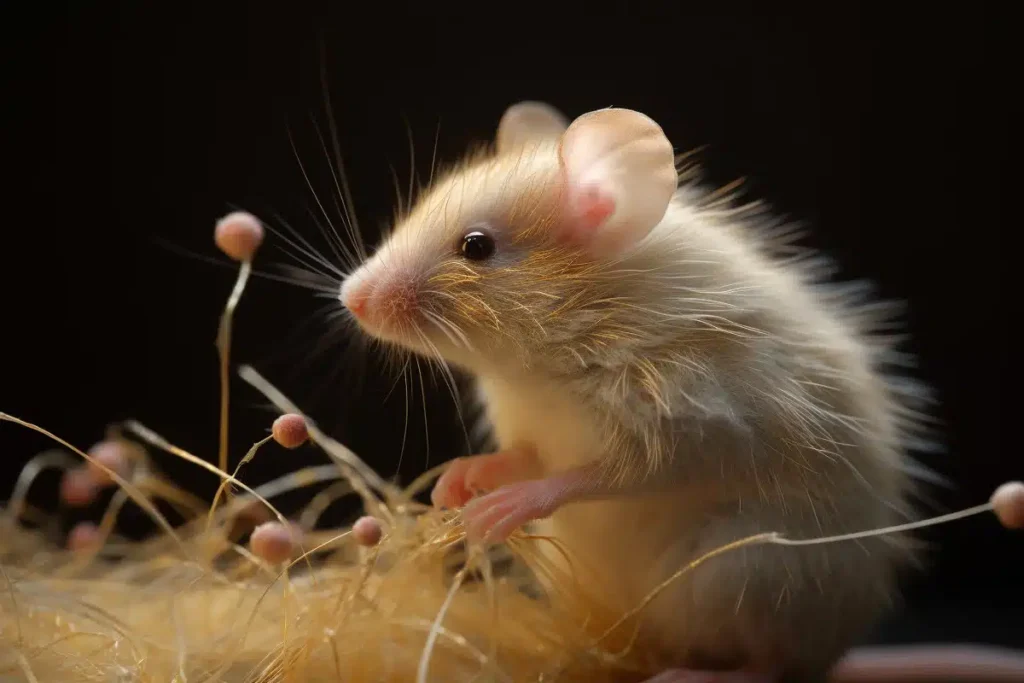In a groundbreaking exploration of cognitive abilities in animals, researchers at HHMI’s Janelia Research Campus have uncovered evidence suggesting that rats, like humans, possess the capacity for imagination. This groundbreaking revelation emerged from a sophisticated fusion of virtual reality technology and a brain-machine interface, allowing scientists to delve into the inner thoughts of rats.
The research, led by teams from the Lee and Harris labs, employed a cutting-edge system that functioned as a real-time “thought detector.” This innovative setup enabled the measurement and decoding of neural activity in the rat’s hippocampus, a region associated with spatial memory. The findings revealed that rats could voluntarily generate neural activity patterns akin to the human imagination.
In a meticulously designed virtual reality environment, rats exhibited the remarkable ability to control their hippocampal activity, allowing them to simulate navigating specific locations or interacting with objects purely through cognitive processes. This discovery challenges conventional notions about the cognitive capacities of animals, showcasing their ability to engage in mental simulations and envision scenarios without the need for physical experiences.
The sustained hippocampal activity observed in the rats during these imaginative exercises suggests a level of focus comparable to humans’ ability to relive past events or envisage new situations. This groundbreaking research not only expands our understanding of animal cognition but also prompts profound questions about the nature of imagination and its evolutionary roots across species.
This novel intersection of neuroscience, virtual reality, and brain-machine interfaces opens up exciting possibilities for further exploration into the inner workings of animal minds. As we unravel the mysteries of imagination in rats, we gain deeper insights into the rich tapestry of cognitive abilities that extend beyond the human realm, forging new frontiers in our comprehension of consciousness across the animal kingdom.
In a groundbreaking study, researchers at HHMI’s Janelia Research Campus have unveiled a remarkable revelation: animals possess the capacity to imagine. Employing an innovative blend of virtual reality and a brain-machine interface (BMI), the researchers delved into a rat’s innermost thoughts, discovering that these rodents voluntarily generate neural activity patterns in the hippocampus, akin to spatial memory. This implies that, like humans, animals can conjure mental images of places and objects not physically present, utilizing their thoughts to envision navigating to a specific location or moving a remote object to a designated spot.
This groundbreaking exploration into the realms of animal cognition hinged on the development of a real-time “thought detector” – a system fusing virtual reality and BMI. The BMI established a direct link between the rat’s hippocampal activity and its position within a 360-degree virtual reality arena. The hippocampus, a vital brain region responsible for spatial memory, stores mental maps essential for recollecting past events and simulating future scenarios.
Harnessing rats in a virtual reality system, the researchers witnessed the rodents’ ability to manipulate their hippocampal activity solely through thought processes. Whether navigating to specific locations or moving virtual objects, the rats demonstrated a remarkable capacity to engage in mental simulations away from their physical position. This intriguing discovery not only suggests a form of imagination in animals, mirroring human cognitive processes but also holds promise for advancing neural prosthetics through the use of hippocampal representations.
The study’s innovative use of BMI as a tool for deciphering hippocampal activity showcases its potential in unraveling the mysteries of cognition. Beyond its implications for understanding animal imagination, the research opens new avenues for developing prosthetic devices inspired by the principles governing the intricate workings of the brain. This intersection of neuroscience and technology not only sheds light on the cognitive capacities of animals but also hints at transformative possibilities for enhancing human-machine interfaces and neuroprosthetics.
